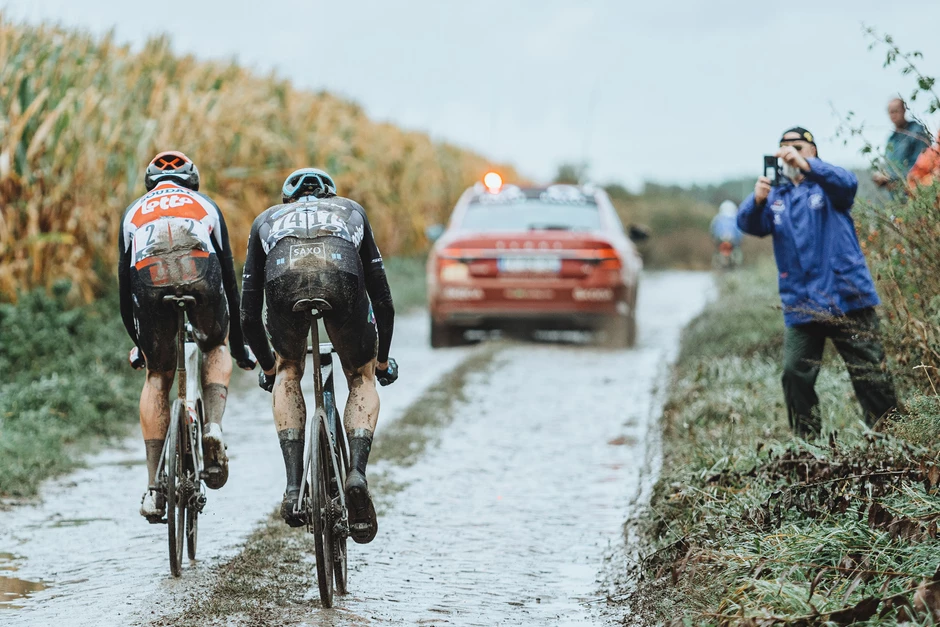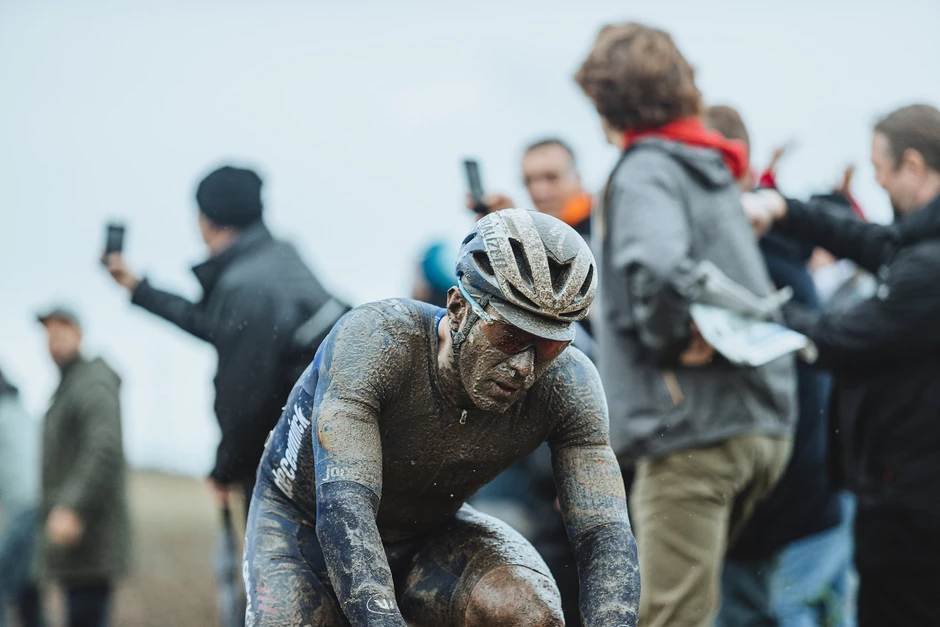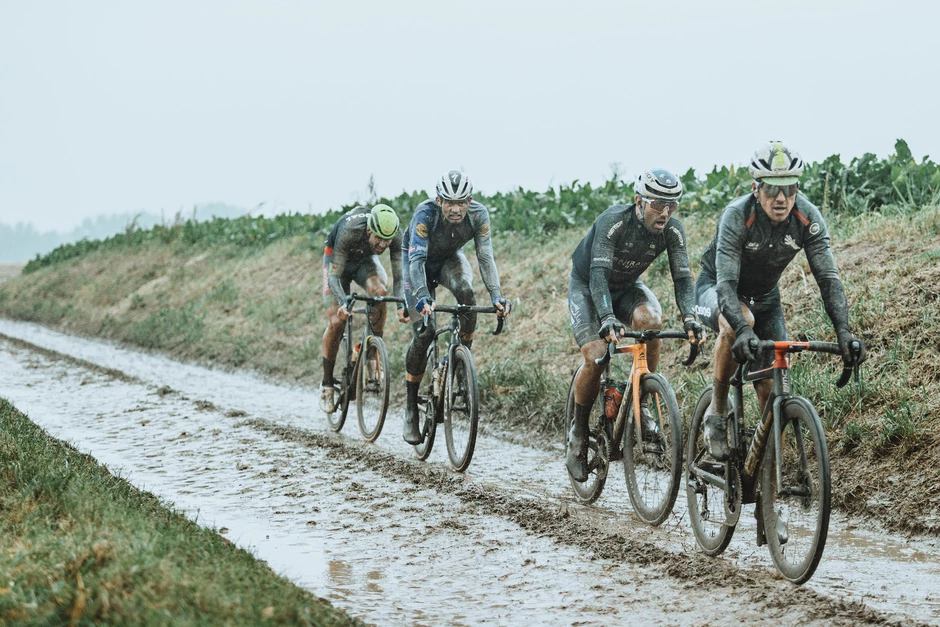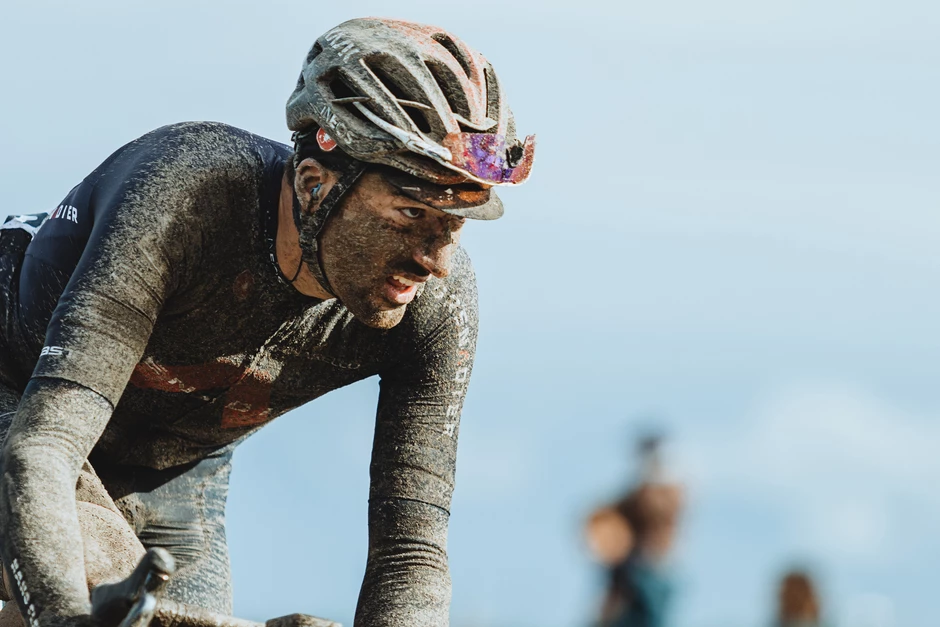Words: Tom Southam
Photography: Chris Auld
“The inches are all around us.”So goes Al Pacino’s famous speech from Any Given Sunday. “In every break of the game, every minute.”The inches, or the gains in bike racing – be they marginal or otherwise – are indeed all around us, and the search seemingly never stops to find those incremental differences between winning and losing.
Matthieu Van der Poel, Wout Van Aert and Tom Pidcock are undoubtedly exceptional talents who would be able to win at the top level, no matter what. But perhaps – after we’ve gained all the inches we can from sports scientists, aerodynamics and data – success on the road, in the 20s, comes down to simply bike racing, in as many different ways as possible.

Over the past two decades, racing less and training more has become the dominant ideology in pro teams. Training in the modern era was effective, quantifiable, and safe. If you don’t race you reduce the likelihood of crashing, and of getting sick; you reduce the fatigue from travel and any changes in diet, and avoid the mental strain of a competitive environment. Over time, we started to see the stars of the sport in action less and less as they hid away in hotels, high in the mountains, aggregating their gains.
In January of 2021, however, we watched the same riders who would dominate the Spring Classics, the Olympic Games (MTB and road), the Tour de France, the Vuelta and an October Paris – Roubaix, fight it out across a windswept Belgian beachfront at the World Cyclo-Cross Championships.

It wasn’t just the three big names either. Tim Merlier – a stage winner in the Giro and the Tour in 2021 – finished 17th. Also in the race, was veteran Heinrich Haussler, who claimed that riding a CX season was one of the best things he had ever done for his road racing career.
In 2022, two professional mountain bikers, Milan Vadar and Victor Koretksy, will find places in professional road teams, who plan to allow them to race the mixed calendar of events that has recently proved so successful.
Some of the very best riders in the world are now racing almost constantly, and in varied disciplines. But why, or how, does the multi-discipline approach breed such talents? And how can riders suddenly manage to race and be competitive from January to October?

The answer, in part, is that the overall standard of being at races has improved. Ten or fifteen years ago team chefs were still an expense that was saved for the big tours, but these days it’s rare that riders ever have to eat from a Campanile buffet which may well have been sneezed over by other guests. The travel involved in the World Tour has also reduced. With very little racing left outside of Europe, riders can actually race more as the effects of long distance travel rarely have to be accounted for.
On the bike, it is no longer enough just to be able to produce a certain number of watts per kilo. The winning edge is being able to access your watts per kilo after a four hour fight for positioning, using every inch of the road, and being the freshest – both mentally and physically. Saving energy is at such a premium that the guys who are simply the most comfortable on their bikes are the ones who have the legs in the end.
Add to this, the fact that road racing is now so competitive that descents, once a time to have a breather and get something to eat, are now as vital a battle ground as anywhere. Teams and individuals use descents to put pressure, either mental or physical on their rivals.

Mental health, now thankfully a part of the conversation in professional sport, may also be a key piece of the puzzle. When I asked Magnus Bäckstead, former Paris Roubaix winner – and father of recently crowned junior women’s world champion, Zoe – how he tries to avoid burn out for his daughters (both race a busy multi-discipline schedule) he told me: “It’s actually easy. Elynor (who rides for Trek women’s team) rides up to four different bikes a week. It’s her choice, and she loves it.”
In the high pressure environment of pro sport, having the opportunity to complete your training in a mentally refreshing way is a huge advantage for longevity both in the season and in a career. Staying in a half empty hotel and riding up and down a mountain at fifteen hundred metres isn’t for everyone. Cycling is a sport that rewards suffering, but that suffering should be physical and not mental.
The inches then, in the 2020s, may just be the skills and mindset of the multi-discipline rider. The rider who can keep pedalling around a wet bend with no camber like they are turning on grass; the rider who can hold their nerve on the inside of the wheel; who can bunny hop the next piece of road furniture to stay in line with their teammates; and who – dare we say it – enjoys riding and racing their bike, whatever bike that may be.

